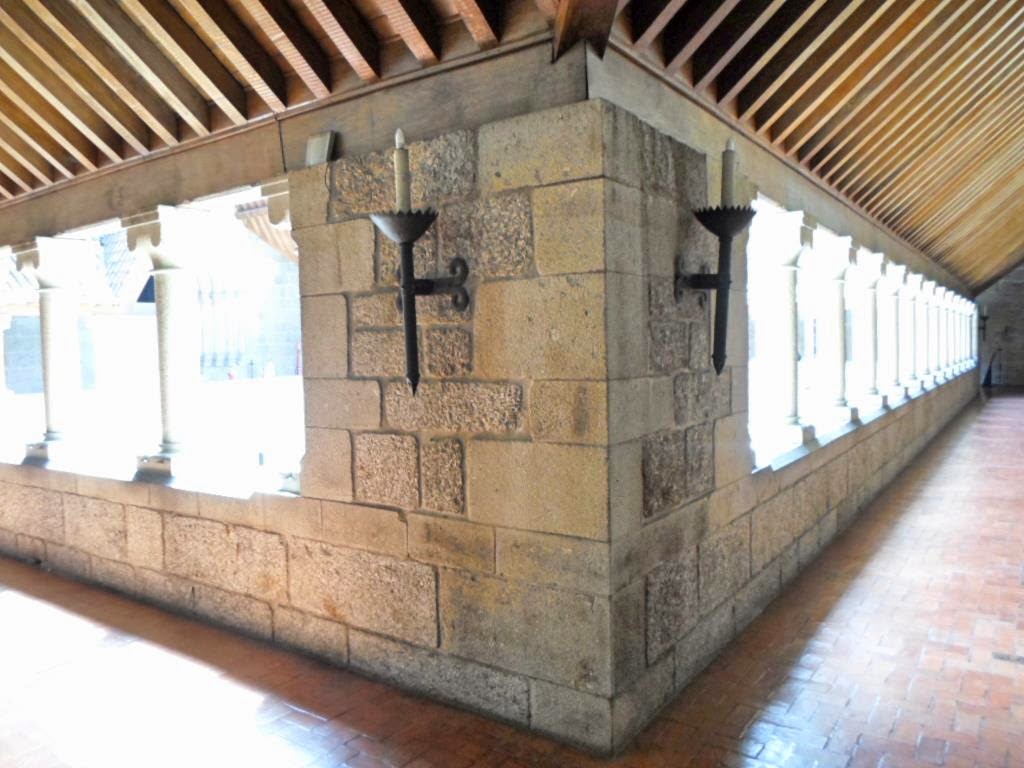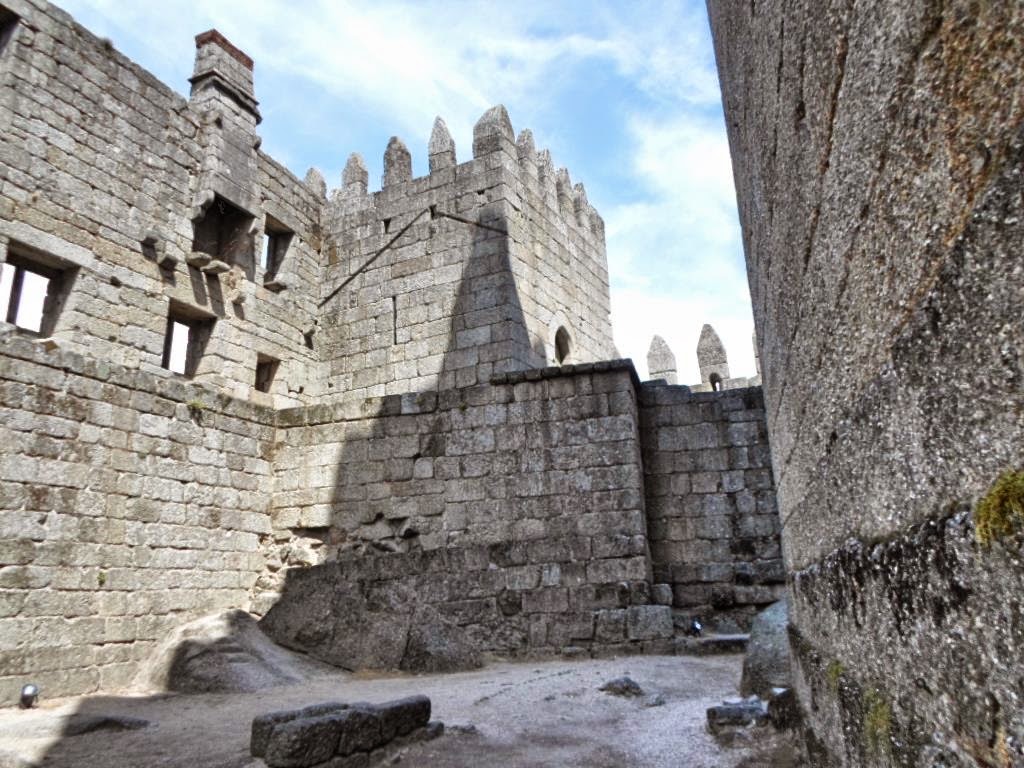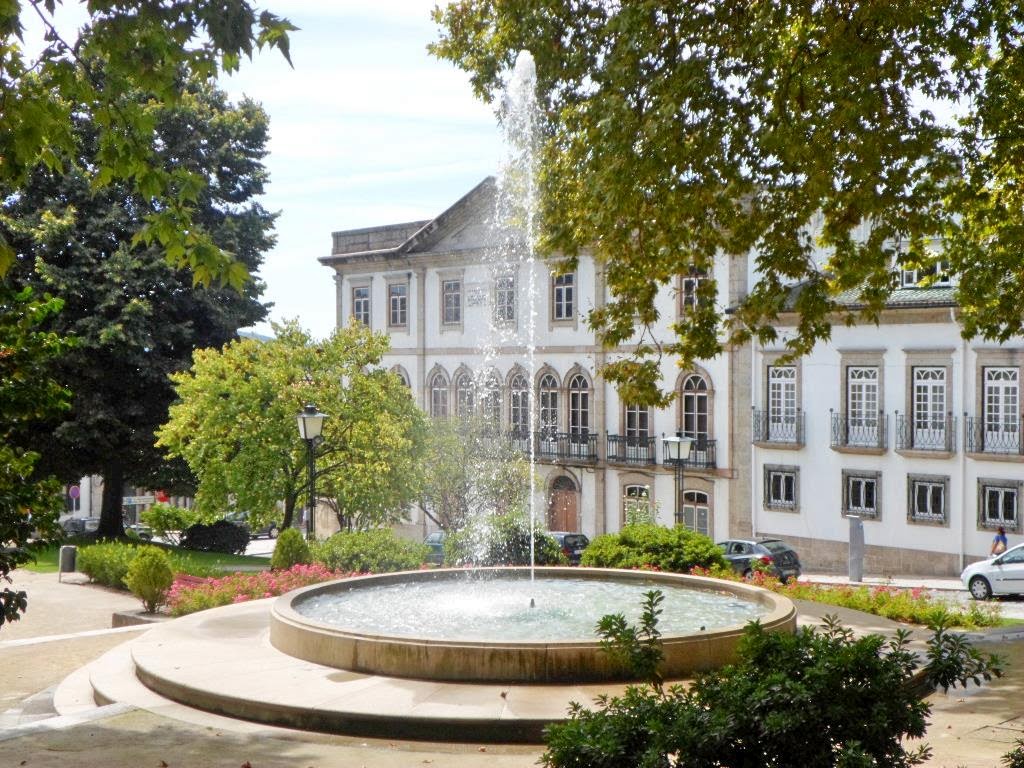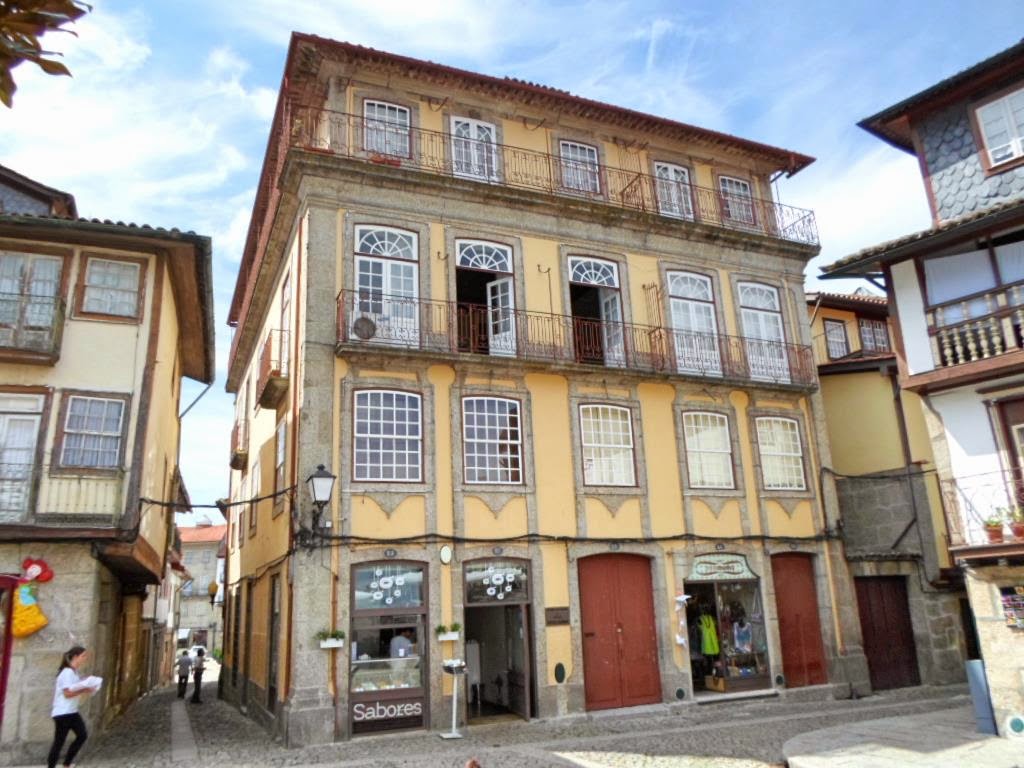Located 55 km (34 miles) northeast of Porto is the historical city of Guimaraes, which dates back to the 10th century. As the birthplace of D. Afonso I, Portugal's first king, and the first capital of the newly established kingdom of Portugal, Guimaraes is recognized as the birthplace of the Portuguese identity. In 2001, it was declared a UNESCO World Heritage site and in 2012, designated the European Capital of Culture (a title shared with Maribor, Slovenia) by the EU.
The train ride from Porto to Guimaraes was a little over an hour and cost 6.20 euros round-trip; again, fast, efficient, and affordable. Arriving at the Guimaraes railway station without a map, I looked to the castle as my guide post and walked towards it; it took me about 10-15 minutes to walk to the historic center.
I started my tour at St. Francis Church and then proceeded to see the Ducal Palace, the 10th century castle, the small chapel of Sao Miguel, the historic center, the 12th century church of Our Lady of Oliveira (Nossa Senhora da Oliveira) (where I crashed a wedding), and the Alberto Sampaio Museum. At around 6 pm, feeling mentally-saturated and physically-drained, I returned to Porto by rail. Here are photos of the day:
Above left: St. Francis Church (circa 1400)
Above: Inside the 15th-C St. Francis Church
Above: Impressive azulejos at the main altar
Above left: View of Sao Gualter Church in the background; Above right: 13th-C city walls (muralhas da cidade) ~ built to protect the city from Muslim invaders from north Africa
Above: Ducal Palace (Paco dos Duques) ~ copied verbatim from the plaque outside the building: "The palace was ordered built in the first quarter of the 15th century by Afonso, first Duke of Braganca. The size of the palace and some architectural details show European (particularly French) influence. Undergoing significant alterations over the centuries, it was reconstructed and adapted into a museum and the official residence of the President of Portugal (i.e. during the Salazar dictatorship) in the mid 20th century." (entrance fee: 5 euros per adult, 2.50 euros per student)
Above: The 10th century castle (free entrance)
Above left: Menagem Tower (Torre de Menagem)
Above: The chapel of Sao Miguel (Capela de Sao Miguel do Castelo), where Afonso Henriques was baptized
Above: Monument to King Afonso Henriques I ~ sculpted by Antonio Soares dos Reis
Above left: Largo do Carmo
Above right: Rua de Santa Maria
Above: Rua de Santa Maria
Above: City Hall / Santa Clara Convent (Camara Municipal / Convent de Santa Clara)
Above: Praca San Tiago
Above: Praca San Tiago
Above right: Rua Rainha D. Maria II
Above right: Largo da Oliveira
Above left: Salado Monument in front of the Church of Our Lady of Oliveira in Largo da Oliveira
Above: Built by Afonso IV in the 14th century, the Salado Monument commemorates the victory of the Battle of Rio Salado in 1340
Above right: Largo do Toural
Above left: Largo do Toural; Above right: Rua Egas Moniz
Above right: A wedding at the 12th century church of Our Lady of Oliveira (Nossa Senhora da Oliveira)
Above left: I love this painting of St. John Paul II
Above: Inside the Alberto Sampaio Museum (Entrance fee: 3 euros per adult, 1.50 euros per student)
Above right: A portrait of Mariza, Portugal's beloved Fado singer
Previous post: Porto, Portugal - Part III (August 28, 2014)













































































































































































No comments:
Post a Comment